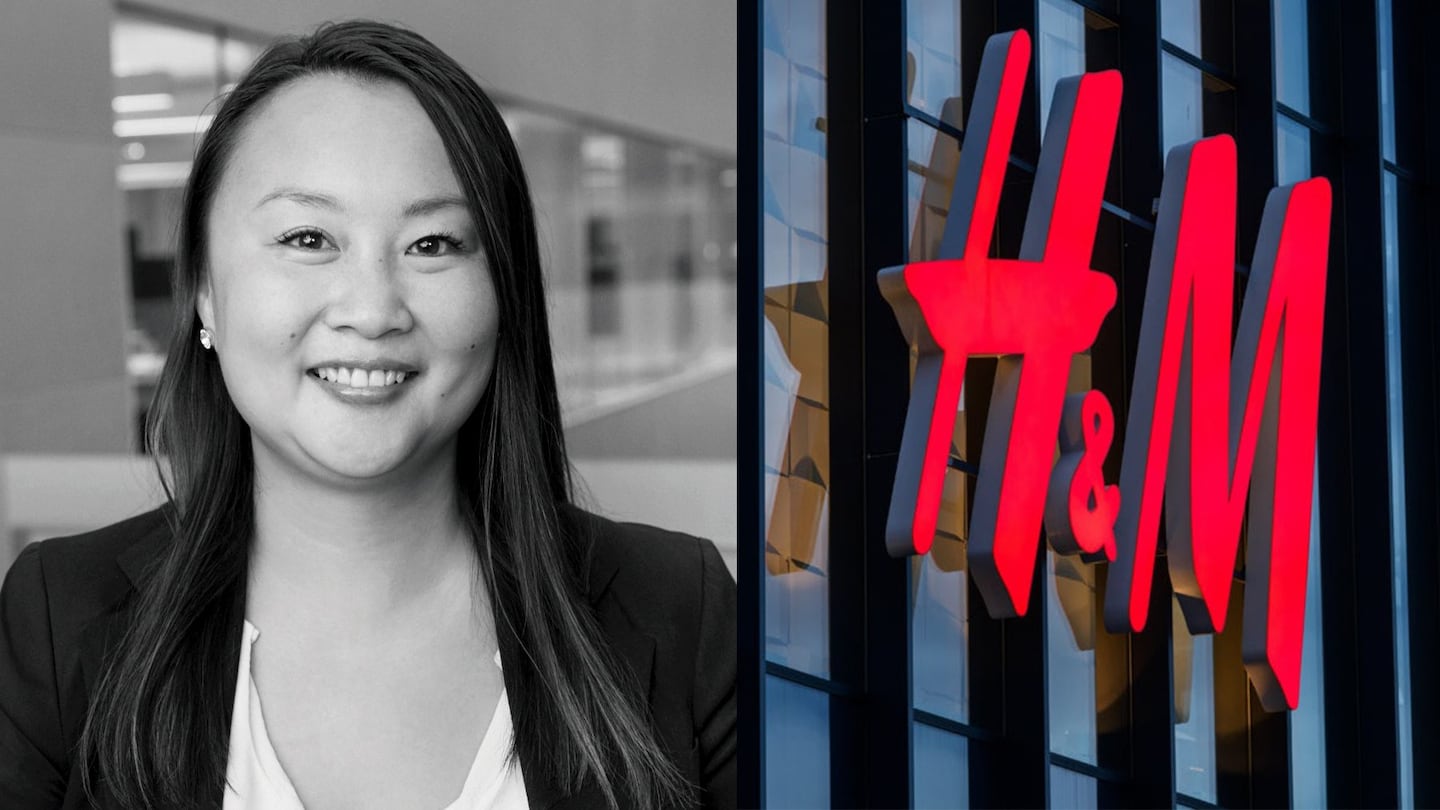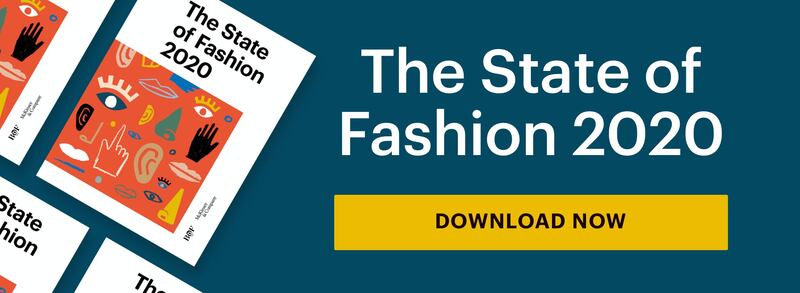
The Business of Fashion
Agenda-setting intelligence, analysis and advice for the global fashion community.

Agenda-setting intelligence, analysis and advice for the global fashion community.

LONDON, United Kingdom — After modest progress and some high-profile failures, the fashion industry has begun to realise that diversity and inclusion needs to be addressed at the C-level. Several companies have hired chief diversity officers, who handle internal matters like monitoring hiring practices and advancement while scrutinising public-facing representation across marketing and design.
Someone who can share first-hand experience on how diversity executives operate is Annie Wu, the first-ever global leader of diversity and inclusion at H&M Group. Wu was appointed to the position in early 2018 after H&M had a misstep of its own, receiving widespread criticism for choosing a young black model to pose in a "Coolest Monkey in the Jungle" sweatshirt. Her remit reflects the scale and complexity of the challenge ahead. Delivering real change through a unified strategy for eight different brands across a vast corporation that employs more than 120,000 people (FTE equivalent) and operates 4,900 stores across 73 international markets, is no easy feat.
BoF: What have been the hard lessons you’ve had to learn?
Annie Wu: The hardest one has been underestimating how hard change is, and especially change in people's behaviours. It's so easy to understand the topic, versus actually putting things into action. Having to change your behaviour is really, really hard for people. That's why I always say that this is a journey.
ADVERTISEMENT
BoF: What have been the most effective ways you’ve been able to execute change?
AW: You always have to get personal. When you're talking about diversity, it can get very high-level and fluffy. But everyone has experienced exclusion in their life. This role is a lot [about] influencing people and their mindsets, and so making it personal to them has worked really well. You also need to be super analytical and can get into those numbers. Until you really have facts in front of you, for a basis of decision-making, it's really hard to get the message through.
BoF: What is the group’s overall diversity and inclusion strategy look like?
AW: Our strategy has three pillars: people, business and community. For 'people'; we talk about everyone across our entire value chain, and that goes from suppliers [and] employees [to] our customers. 'Business' is how we actually form our teams and what products we present to the customers, and 'community' is the impact that we have, or hope to have, in the communities that we operate in.
BoF: But how do you implement the strategy across such a large company?
AW: It takes a lot of coordination between all the different functions. It's a lot of cross collaborative work. I try to make sure the topic of inclusion and diversity is embedded in our processes, in our decision making, in everything that we're doing. [Previously], there were so many different programmes and initiatives and policies going on across the organisation. We had a global [HR] policy, we had different countries working on very different things that relate to inclusion and diversity. We also had our sustainability department; working on what [went] into their pillar of fair and equal [rights] for being an employer and how we work with our supply chain. [So] it's really pulling all of these things together and making it intentional with one voice.
BoF: What about delivering consistency in terms of deploying the strategy across the group’s eight different brands?
AW: What we've been doing this last year is meeting with each of the managing directors of all of our brands and making sure that this strategy is embedded in the DNA of [each] brand, and also the goals that they're trying to achieve.
ADVERTISEMENT
BoF: Does the H&M Group have a specific definition for how it sees diversity?
AW: Our definition of diversity is that there is no definition of diversity. What diversity means to you [is] in your local context. If we're talking about a more homogeneous society, like Sweden, for example, then diversity is actually [focused more on] gender and not [as much] about race. Then you go to countries like South Africa, like the US, like the UK, where diversity is about race and ethnicity. So we try to cover as many of these perspectives as possible. There are lots of different definitions of diversity and we don't want to stick to just one specific one.
Our definition of diversity is that there is no definition of diversity. What diversity means to you [is] in your local context.
BoF: So your diversity goals vary by region?
AW: Yes. Because we are present in so many different markets around the world, we want to make sure that this resonates with everybody in their own way. In India, for example, we want to really push women in leadership roles [so our] Indian teams are looking at their demographics and seeing how to [achieve this in their] succession planning for the coming years. In South Africa, we know that youth unemployment is super high in the cities [where] we have our stores [so] we really sought out and collaborate now with [relevant] organisations since we know that we can hire a lot of them in our store.
BoF: Can you elaborate more on why it’s important to break this down regionally, as opposed to globally?
AW: At the end of the day, we want to reflect, respect and relate to our customers everywhere around the globe. In order to do that, we need to recognise the way that someone shops or even dresses and looks at clothing [can be] very different in South Korea compared to Sweden, compared to South Africa. If we don't have the knowledge of where those decisions are being made, then we need to find it, and have them live it. We need to understand culture, history and diversity around the world. The broader we would like our customer base to be, the broader our products also have to be.
BoF: How do diversity initiatives work in terms of designing the actual product?
AW: We look into who are our designers [are], who makes up the teams that are designing these products, all the way from design to marketing to campaigns, to how we even set them up visually in our stores, either online or in store. It's really the make-up of the teams and looking at those demographics and baselines.
BoF: How can companies measure their progress on diversity?
AW: That's a burning question for all of us. It's really hard to measure, especially on a global aggregate level. Gender and age, I would say, are probably the only demographics that we can aggregate globally, because local laws play a lot into it. In Sweden, [for example] you're actually not allowed to capture ethnicity and race, and now in Europe, with GDPR [the European Union's data privacy regulation], getting demographics is getting harder and harder.
ADVERTISEMENT
BoF: So how does the H&M Group measure its progress?
AW: We've put out some ambitions; one of them is 100 percent of our employees feel that they have an equal opportunity, and we hope to measure that through our employee engagement surveys. We're also working right now on community impact and perception. We're trying to see through our net promoter score our customers' perception of who we are. Net promoter scores are also very good at gauging where we stand in different markets.
BoF: But what are some concrete examples of company practices that ensure diverse hiring?
AW: Externally, we need to look broader and beyond. It could be schools that our interns are coming from, to different places that we're placing ads. There's so many different ways that we can recruit from a broader pool than what we've been doing, because like any company, I think a lot comes from referrals, which is great, but we need to also make sure that we are bringing in people that will challenge us.
How else do you think the fashion industry could be more diverse?
AW: We still have a long way to go; all the different aspects of diversity from body types, body shapes, to us bringing in more diversity from all over parts of the globe. Fashion is still very western driven.
BoF: You were born in Taiwan, moved to the US when you were six and grew up there. How did you land this role at the H&M Group?
AW: I started in our New York office almost seven years ago, as a labour employment attorney. I worked with a lot of labour and employment issues and then an opportunity came up for me to move to the Stockholm head office to work in our global HR department three years ago. I headed our group employee relations team, and that covered the inclusion and diversity piece worldwide. I assumed this position in January of last year.
BoF: What do you think it is about the fashion industry now that’s finally galvanising change?
AW: We understand that the customers want us to change. They want to see themselves when they go into a store. We used to tell the customer what they wanted. [Now] it's the customer telling us what they want, and we have to listen.
This interview has been edited and condensed.

Check out this week’s new partners and openings on BoF Careers, the global marketplace for fashion talent.
BoF Careers provides essential sector insights for fashion designers this month, to help you decode fashion’s creative and commercial landscape.
This week, talent expert Suki Sandhu OBE and advisor and executive search consultant Karen Harvey shared insights on the core skill sets expected of leaders and managers in the fashion industry today. BoF Careers shares key learnings from the event.
Discover the most exciting career opportunities now available on BoF Careers — including jobs from Ermenegildo Zegna Group, JW Anderson and A-Cold-Wall.